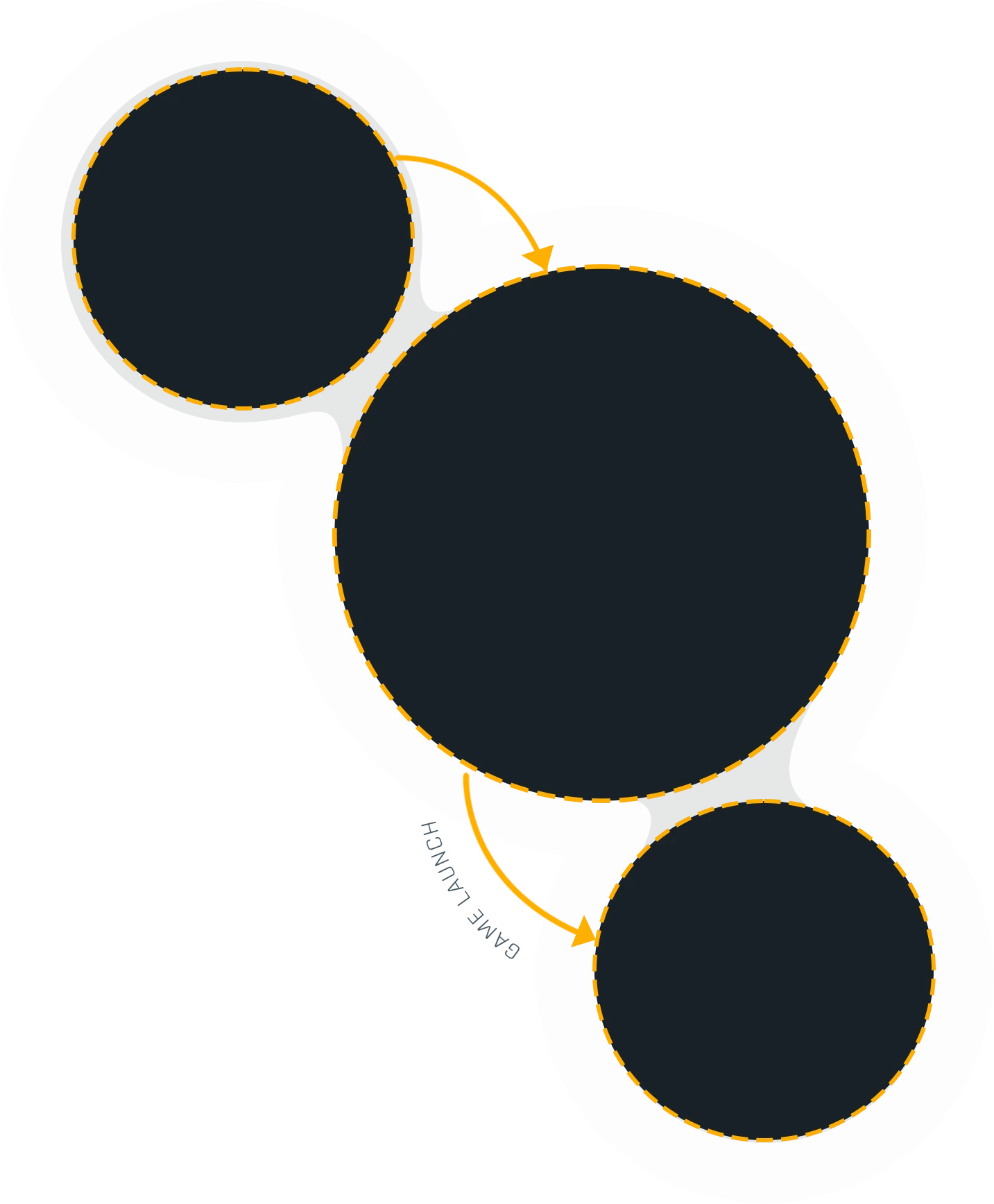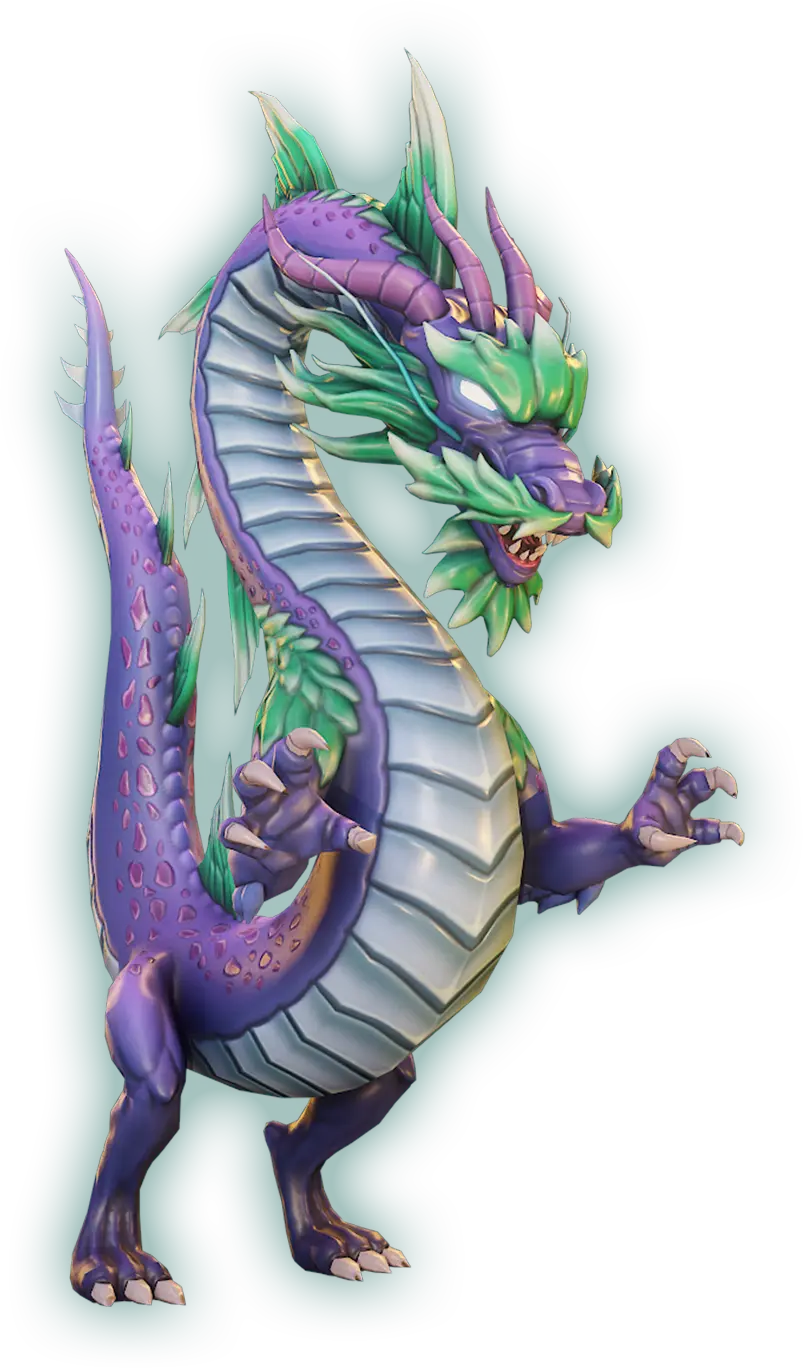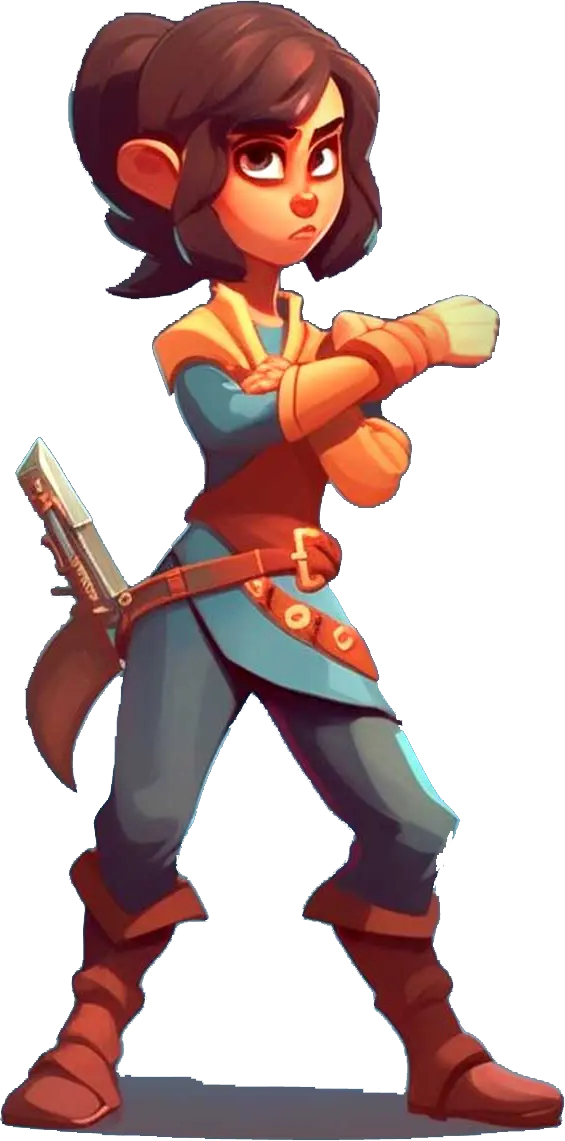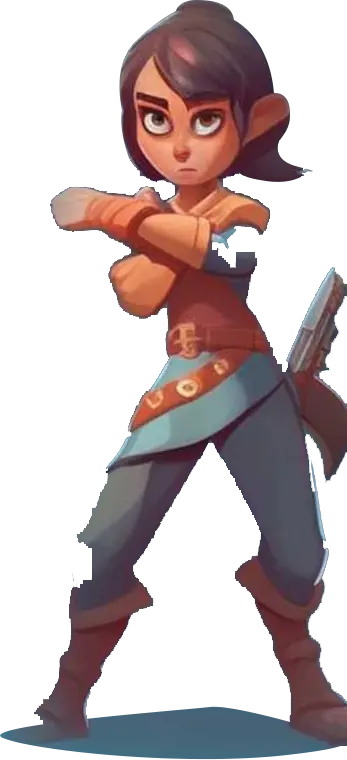Juego Studios is a 300+ strong team consistently delivering some of the most spectacular 2D/3D game art outsourcing services for cutting-edge startups & Fortune 500 companies. We have created art assets for games, simulations, and trailers while handling full-cycle game art production for incredibly immersive and demanding projects. In addition, we cover a wide gamut of game art services for our clients, including 2D and 3D animation, environment design, storyboarding, and game character design.
Juego Studios is a 300+ strong team consistently delivering some of the most spectacular 2D/3D game art outsourcing services for cutting-edge startups & Fortune 500 companies. We have created art assets for games, simulations, and trailers while handling full-cycle game art production for incredibly immersive and demanding projects. In addition, we cover a wide gamut of game art services for our clients, including 2D and 3D animation, environment design, storyboarding, and game character design.
We handle the complete game art production pipeline - from concept art and mood board creation to animation and asset integration. Juego has experts from all sub-domains of game art and hence the ability to execute projects of all scopes, assuring the highest industry quality standards.
Enhance your existing team with video game artists with demonstrated experience. Pick from a pool of artists selected for their skill set, experience, and projects executed. You can hire the number of resources perfect for your project based on requirements.


There are several benefits to outsourcing your game’s art development to an external company. Below are some of the reasons why game art outsourcing has risen as one of the most common methods of creating the art and assets for games:
In-house game art development can be expensive because it requires you to hire team members for all the diverse departments involved in the art pipeline. In contrast, when you opt for a game art outsourcing service, you receive the expertise of artists who another top company has already screened and selected for their domain knowledge.
In addition, you can save many overhead costs and administrative fees by hiring an art outsourcing studio. For example, you do not need to provide for office space to work in or provide other amenities required to do their job. The game art outsourcing company would take care of all such expenses.
Furthermore, game art development also requires investment in hardware and software, both of which can drive up the costs. Hiring a game art outsourcing company helps save these costs as the company would already have all the hardware and software licenses required at its disposal.
Outsourcing also helps a lot of time to be saved. For example, consider a project with an enormous scope of requirements in terms of art. It might be impossible for your team to accommodate all the asset production requirements and deliver them within a short time frame.
On the other hand, if you outsource specific work within your art and design production pipeline to a game art services provider, that team can work on some of the assets simultaneously as your team works on yours. As a result, the team can deliver quality output within a short timeframe.
Likewise, if the team strength of your team is smaller, you can choose to go with a game art outsourcing company with a significant number of members. The team would be able to deliver your requirements much quicker than you can do alone.
If you need specialists with years of experience, game art outsourcing is probably the best method. You can find specialists with years of experience in a particular domain of game art, be it concept art, 2D art creation, 3D modeling, or animation. If you need access to them in a short timeframe, then the best method is undoubtedly outsourcing.
Outsourcing is also the preferred solution when you require hyper-specialized people. For example, outsourcing lets you access people who are specialists in a sub-domain of game art, such as a particular art style.
Top game art outsourcing companies would have a lot of experience working on leading projects. This experience usually gives them insights that novices won’t have.
Hence, in your project, a top team can give you pointers on how best to implement ideas into your game. In addition, they can provide you with ideas that can polish your concepts for the better. Moreover, they can even offer a different perspective on how to do art for your game best.
You would have core focus areas of your own, where spending your time and attention would deliver remarkable results. However, if you do in-house development, you might be unable to focus on your core skills.
If you outsource, however, you can focus on the areas where you have the best expertise. The team you hire likewise can concentrate on the art aspect, from start to finish, freeing you from the time and mental load of closely inspecting your game’s art and design production.
Multiple factors can affect the general cost of a game art outsourcing project. So, it is impossible to give a rough estimate of how much your project is going to cost. Instead, the price would change based on your requirements.
However, to narrow this down, below are four critical factors that have the most bearing on your game art outsourcing project’s cost:
The bigger your game, the more artwork your game is going to need. This means more effort on the part of the game artists, as they require painstakingly to create the different artworks of the game. In addition, if the art is in various styles and you need the same artwork in other file formats and sizes, the cost goes further higher.
Consider two widely different games, an RPG game with an open world and a hyper-casual game with 40 levels. The RPG game would require a considerable investment from the team of artists in terms of effort to build thousands of assets from characters and props and create different environments in the game. For the hyper-casual game, on the other hand, the artists comparatively have to put in far less effort because of the simplicity of the game.
If the project duration is long, the more the cost of art development for your game would be higher because it requires the outsourcing company to accommodate your project needs for a longer duration and assign your project to their experienced team of artists. Hence, the outsourcing partner is bound to share a higher quote for a project with an extended duration.
However, this does not mean that to cut costs, you should develop the art for your project within a short timeframe. Because rushed work is often bad artwork.
The number of artists you want to execute your game art project also impacts the overall cost. Because the higher the number of artists required, the higher the price.
This directly ties in with the scope of your game. If your game is expansive, you may need the expertise of artists from different domains of game art, such as concept art, 3D modeling, UI/UX design, etc. The more resources you require, the higher your costs will go.
The final and maybe the most critical element that impacts game art outsourcing is quality.
In short, quality game art requires investment. It requires experienced, talented, and skilled artists to put their efforts into creating the best quality output they can as per the project requirements. This requires investment from your side to hire their expertise.
And the investment is often worth it. Because bad visuals are one of the chief reasons, games have low retention rates. People try the game, see the less-than-stellar visuals, and then eventually install the game.
On the other hand, games with quality visuals receive acclaim. Most successful and classic games have visuals that fit the game’s core concept because the game artists must have poured hours into perfecting the art style and eventually delivering the assets in quality.
To pick the right game art outsourcing studio, you must assess and analyze them over multiple metrics. This careful analysis is essential because the partner you opt for can make or break the experience you have as the client. Because the right team would be able to deliver precisely what you require without spending too much time and effort on it. Likewise, the wrong team would lead you to have the opposite experience.
So, below are some of the critical metrics that can help you pick the perfect game art outsourcing studio for your project:
The overall strength of the art team is a crucial element, as a massive team would be capable of doing multiple things. Because usually, a company with a big team would have a mix of both experienced artists and upcoming talents. The team can balance and maximize both sets of artists to get the best quality output.
Likewise, if you opt for a bigger company, you can receive access to artists from all domains of game art. You do not have to assign game concept art to one company, animation to another, UI/UX to another, and so on. Instead, you can go for one company and assign them the entire art and design production pipeline.
The portfolio of an art and design company is the most important predictor of the team’s capability. The portfolio lets you assess the team and their work capabilities from the previous work they have done for other clients.
However, you must assess the portfolio on multiple aspects to get the maximum benefits. For instance, to understand if your team can deliver the same art style your game has, you can check if the team has worked on other games with a similar art style. Likewise, you can see if the team has worked on the target platform in which your game will be released.
The more years the company has been operating as a game art development company, the more reliable its expertise will be. Because in a competitive environment like game development, only the best game art outsourcing companies can survive for a long time.
There is also an additional benefit to hiring an experienced company’s services: insights. A game art outsourcing company that has been operating for a long time would have valuable opinions and can help you create the best game art you can for your game.
Like the portfolio, the clientele is also the predictor of a team’s reliability. Because the more clients seek out the services of the art outsourcing studio, the more trustworthy the company is.
Likewise, you should also look if the company has had clients similar to you, in the same industry, or the same company size. And you can go ahead confidently if the company has clients like this.
The process the outsourcing partner will follow from start to finish is also something you must assess. You must understand how the team will integrate your project into their pipeline.
For instance, is the team going to sign an NDA before the commencement of the work? The NDA would help secure any ideas you share with the team under the specified terms and conditions.
Likewise, you should check how the team will handle the project. For example, do you have a dedicated project manager whom you can contact for project-related queries? Are you going to have routine meetings to discuss the project’s progress and assess if the improvement is in the right direction you intended?
Answers to these questions are vital because they will help you assess your experience as the client and how your concerns will be addressed.
You have numerous factors you must assess prospective hires in the 3D and 2D game art domain to get the best quality output you can. The right hire can make a game, and the wrong hire, likewise, can break a game.
Below are some of the best metrics you can assess your prospective artists with to find the right 2D and 3D game artists:
The most crucial factor is the portfolio. The portfolio is proof of what the artists you are prospecting are capable of. Because the work they have delivered in the past indicates their capabilities in the present and potential in the future.
However, when assessing the portfolio, you must compare it to the role’s requirements. For instance, expecting a senior 3D artist to have an extensive portfolio in a wide variety of art styles is standard, while expecting someone from a much junior position to have the same track record of quality output is not.
In the current era, game art is not created by hand. But they are instead made using top software. So, it doesn’t matter how proficient or talented a prospective artist is if they lack the skill and experience in using the latest technology.
Because the features of today’s top visual editor software help to both save time and create excellent game art in ways never possible before. It also helps fasten up the experimentation phase so writers can reach the final quality output much quicker without less effort.
Rather than hampering creativity, it helps your artists become the most creative they can be.
The 2D and 3D artists you hire must deeply understand different universal art principles, which means visual art principles that are not restricted to game art but extend to other forms of visual expression. These principles include using shape, balance, proportion, emphasis, color theory, etc.
Even if the said artists are expected to break these conventions and create something out of the box, familiarity with these concepts is a must. Because to break the rules most effectively, your artists must first understand these rules in-depth.
You must understand if the artists you hire can adhere to the deadlines set by your team. Because game development is a time-bound process. Usually, the company has a deadline or release date in mind, before which the entire production has to be completed.
So, it is essential that all your artists can adhere to deadlines and do not routinely extend the deadlines further and further.
However, this does not mean your team has to compromise on quality. A good game artist has to understand the balance between quality and timely delivery. The artist must not spend too less time on a particular output and eventually deliver an asset that is not usable. Nor should they spend too much time on the same asset.
Collaboration is everything in game development, as it involves the combination of talents from numerous domains. The same principle applies to game art because it requires collaboration between artists from multiple streams.
Hence, you must understand if the 2D and 3D artists you hire can work collaboratively with all your teams. Because a lack of collaboration can cause issues in the production pipeline that vary from miscommunication to misaligned expectations. So, for the best results, you must ensure that the talents you hire have collaboration skills, from oral communication to verbal, to work in a collaborative space.
You can outsource different types of art from your game art development project. Below are some of them:
Concept art is the basic sketches of different artwork involved in your game’s art production pipeline. The concept artists in your team will be responsible for creating the basic blueprint that the rest of the team has to follow. Because the basic sketches are a guideline for all the team members to follow so that the game has a unified visual signature.
Moreover, the job of the concept artist is to create visual ideas through the medium of drawing. Because contrary to popular perception, concept art does not have the goal of looking good. Instead, it is more about creating and exploring different ideas for the artwork in your game early on and discarding the bad ideas right from the start to get to the best ones. In short, it is a method of prototyping art ideas.
And finding the right ideas is essential, as good concept art can result in excellent game art. But, likewise, bad concept art can derail the whole game art.
Character creation in game art means creating different human and non-human characters in the game. Every in-game charcater is created by the character artist, from the main character to the enemy NPCs.
Character artists must have in-depth mastery of anatomy, including facial features. For instance, if the artist is tasked with creating realistic human characters, they must use their knowledge of human anatomy to produce a realistic output.
In addition, the artists must also have an understanding of how different features have an impact on the players’ perceptions. For instance, a character with a brooding look might give off a different mood than a character that looks vibrant and lively.
Environmental artists in the game create various environments, including snowy mountain ranges, grasslands, deserts, etc. This set of artists is responsible for creating the game world that the game designers have conceived.
Moreover, environmental artists must have in-depth knowledge of different geographical elements and in-game terrains. The artist must be able to replicate different environments for maximum immersion accurately.
Props include the different objects and items in the game. These can range from things such as potions and weapons to non-interactable items.
Texturing artists are artists that create the textures of 3D models, from the skin and fur you see on characters to the foliage you might see in environments. Texturing artists work closely with the 3D artists to create the 3D visual output per the requirement.
Texturing artists must be able to work with real-world references. Based on the project requirement, they may be required to replicate these real-world instances or alter them to suit the visual style.
Lighting artists create the game’s lighting based on the moon and the design of the scene. The artists use light strategically to highlight elements in the scene that should be highlighted and omit things that should be omitted.
Good lighting artists are familiar with different types of lighting. This includes directional lights, spotlights, and point lights. The artists must be adept at using these different types of lights based on scene requirements.
The UI artists create the game’s user interface according to design principles. The UI’s intention is also considered, not just the aesthetics.
Good UI artists are familiar with information architecture, color theory, and the need for the interface to be intuitive. They place each element in the interface, from buttons to the navigation bar, based on user-friendliness and the wireframe.

Please fill in the form and our representative will get back to you.
CONTACT US
